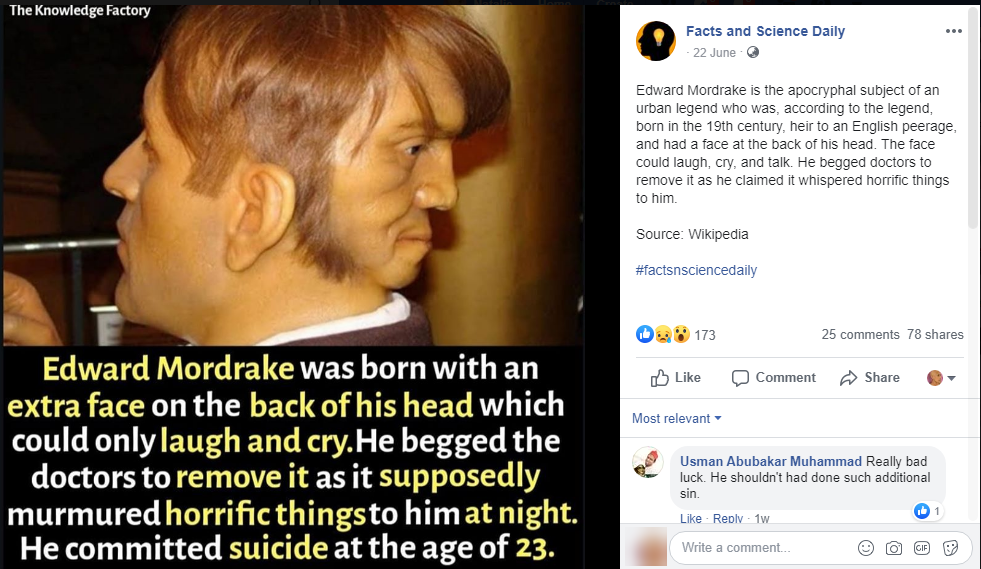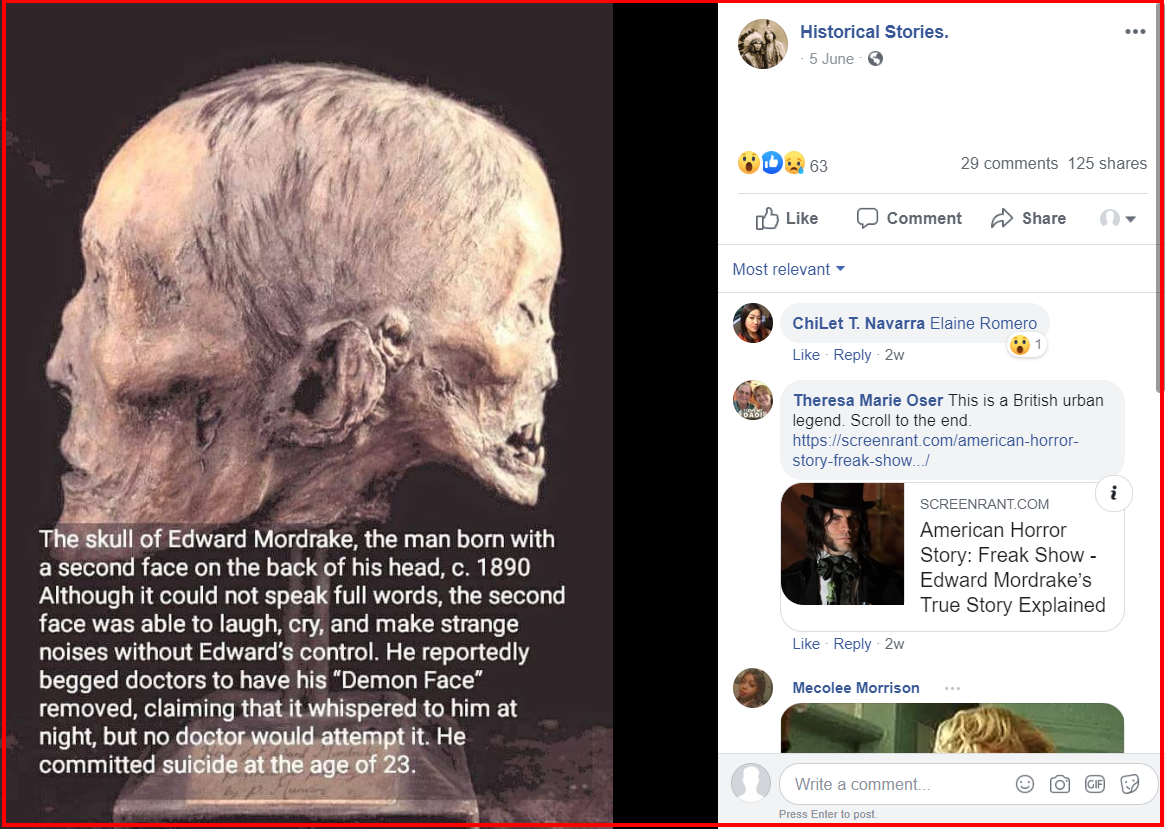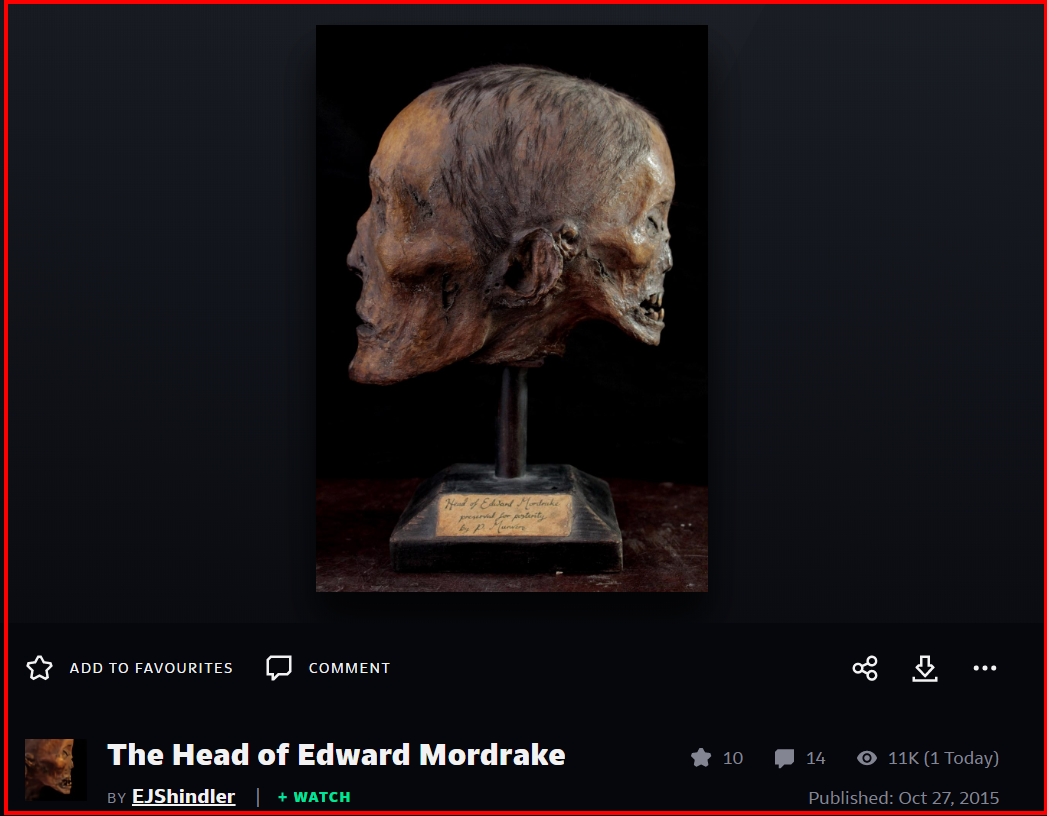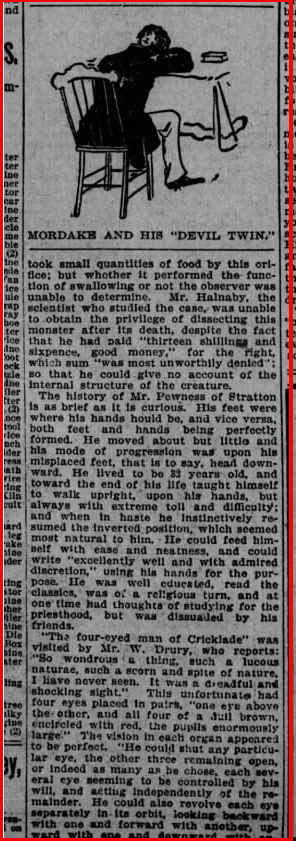
The 1800s in Europe was considered an age of wonder. With the advent of the industrial revolution and phenomena like trade fairs and human zoos, cleverly disguised as ethnographic expositions, the European public were introduced to the concept of the ‘the other’; humans of different races and those considered particularly different to the norm. This in turn gave way to the concept of the ‘Freak Show’ which created a sense of fascination for biological anomalies in human beings. In addition to physical exhibitions of humans, the media too took great interest in the topic and often featured narratives of such ‘freaks’ which were in turn read by audiences with great interest. For instance, stories like that of the famous conjoined Thai twins known as the Bunker Brothers grew in fame around that time.
In this light, we noticed a recent social media post discussing one such ‘freak’ from the late 19th century, had gone viral. Published by popular Facebook Page Facts and Science Daily on 22nd June 2020, the post featured an image of a wax figure of a man with two heads, and was accompanied with the following claim: Edward Mordrake was born with an extra face on the back of his head which could only laugh and cry. He begged the doctors to remove it as it supposedly murmured horrific things to him at night. He committed suicide at the age of 23. The post can be seen below:

We also discovered that narratives about Edward Mordrake had been published by several others in recent times as well. Below is another version of the claim

Considering the contents of the story being from over a century ago and its current circulation on social media, we deemed it necessary to do a fact check to verify the information presented in the viral posts.
FACT CHECK
We began our fact check with a Google Reverse Image search for the photograph of the wax figure with the two heads shown in the original viral post. We discovered that the image was from the Panoptikum Wax Museum in Hamburg, Germany as found in this promotional video published on YouTube in 2016, as can be seen below:

We also noted number of publication pointing out that the image of the mummified face claimed to be of Edward Mordrake, was actually a creation by artist Ewart Schindler.

A further online search for Edward Mordrake revealed that the text from the viral post was in fact borrowed from the Wikipedia article referencing Mordrake. The Wikipedia entry however mentions that the narrative is merely an urban legend as seen below.
“Edward Mordrake is the apocryphal subject of an urban legend who was, according to the legend, born in the 19th century, heir to an English peerage, and had a face at the back of his head. The face could laugh, cry, and talk. He begged doctors to remove it as he claimed it whispered horrific things to him. He committed suicide at the age of 22.”
We also found an archived clipping of an article that ran in the Boston Post in 1895 that described the Mordrake case along with other accounts of ‘human freaks’ as can be seen below:

The account described by the journalist claimed to have received his information from the ‘Royal Scientific Society’ but it is unclear whether such a society ever existed. Other scientific claims related to Mordrake can be found in Anomalies and Curiosities of Medicine, a journal published in October 1896 and authored by two American doctors, George M. Gould and Walter L. Pyle. The account claims that the information was ‘taken by lay sources’ and thus cannot be confirmed as true.
Here is another article with a details elaboration on the matter titled “Edward Mordake—A Mystery Solved”
We next looked into the actual scientific possibility of Edward Mordrake’s particular situation to look into the possibility of the phenomenon itself was true. We discovered two possible medical explanations.
First is a rare type of conjoined twin birthing named Craniopagus Parasiticus, where a parasitic twin head with an undeveloped body is attached to the head of a developed twin. A 2016 medical journal entry titled Craniopagus parasiticus – a parasitic head protruding from temporal area of cranium: a case report, which discussed the rare condition tells us that fewer than 10 such cases have been recorded throughout history and none survived to adulthood.
Another medical anomaly Diprosopus or Cranial Duplication also cropped up in our search. In this very rare congenital disorder, parts or all of a person’s face is duplicated on their heads at birth.

It should also be noted that in both cases, the possibility of the other face in the skull being of the opposite gender as mentioned in the Mordrake story are impossible. For one, documented cases of Craniopagus Parasiticus have always involved identical twins and of the same sex. In cases of Diprosopus, the same is true as it is an exact copy of the main face. This makes the Edward Mordrake story highly unlikely and near impossible to have occurred – especially since we know that such twins have not survived their childhood even with surgical intervention.
Further, we discovered that Hoaxes.org refuted the story in 2015 and Snopes declared it fake in 2017.
CONCLUSION
Based on our findings it is evident that the original Wikipedia mention of the Edward Mordrake story being a legend is highly possible and in turn makes the highly talked about story of the man with an extra face at the back of his skull fake.

Title: Man with an extra face at the back of his head? Here’s the truth!
Fact Check By: Shanaya SeneviratneResult: False





